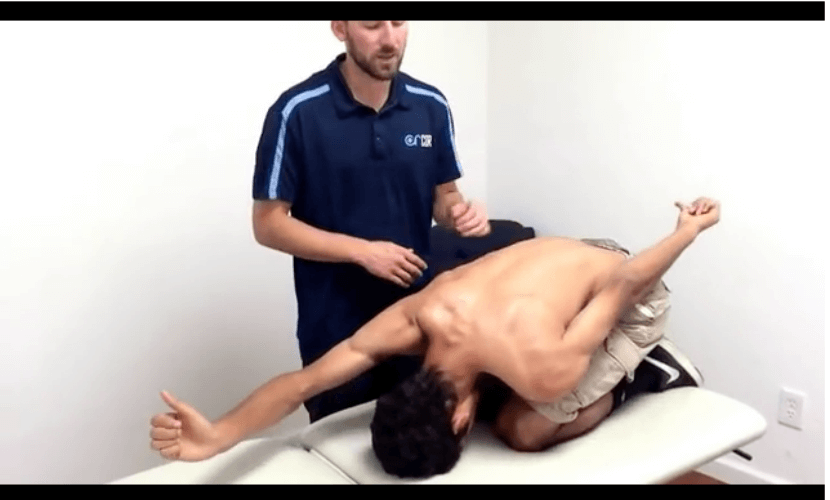COR Exercise of the Week: Scapular Windmill

By Dr. G. John Mullen, DPT, CSCS – President COR – Sports Training and Physical Therapy
Clearly shoulder injuries are the main injury in swimmers due to the volume of revolutions at the shoulder joint for training. If you’ve been following my articles on various websites, you’re well aware I write a lot about the shoulder. These pieces provide numerous tips and tidbits for improvement. Here are a list of some pieces I’ve written on the subject.
- Swimmer’s Shoulder Return to Swimming Program
- Swimmer’s Shoulder – USA Swimming
- How to Prevent Swimmer’s Shoulder | STACK
- Swimmer’s Shoulder Program Part I – Swimming – About.com
- 10 Swimming Shoulder Pain Mistakes
For an extremely detailed review of injury prevention and rehabilitation, please checkout the COR Swimmer’s Shoulder System. I know this is a blatant plug for my product, but this dives into depth of the current program with shoulder injuries as well as a path for improvement.
This system has helped thousands of swimmers stay healthy, and more importantly, returned many to the pool pain free.
Directions:
Keeping the arms as straight as possible, bring one arm forward and keep the other arm behind. The forward arm should have the thumb up; the backward arm should have the thumb down. Lift both arms, thinking about bringing your shoulder blades together.
Do not elevated the shoulders towards the ears, instead pinch the shoulder blades together.
For the body position, the athlete is positioned in this manner to force scapular activation, preventing lumbar (low back) compensation. Try this exercise in the traditional Swiss ball position (legs straight belly on the Swiss Ball), compared to this version and write in the comments if you feel a difference in muscular activation.
A more advanced version includes adding resistance and or pertubations. These two progressions require more strength and control, both vital aspects for swimmer’s shoulder injury prevention.
All commentaries are the opinion of the author and do not necessarily reflect the views of Swimming World Magazine nor its staff. All swimming and dryland training and instruction should be performed under the supervision of a qualified coach or instructor, and in circumstances that ensure the safety of participants.



